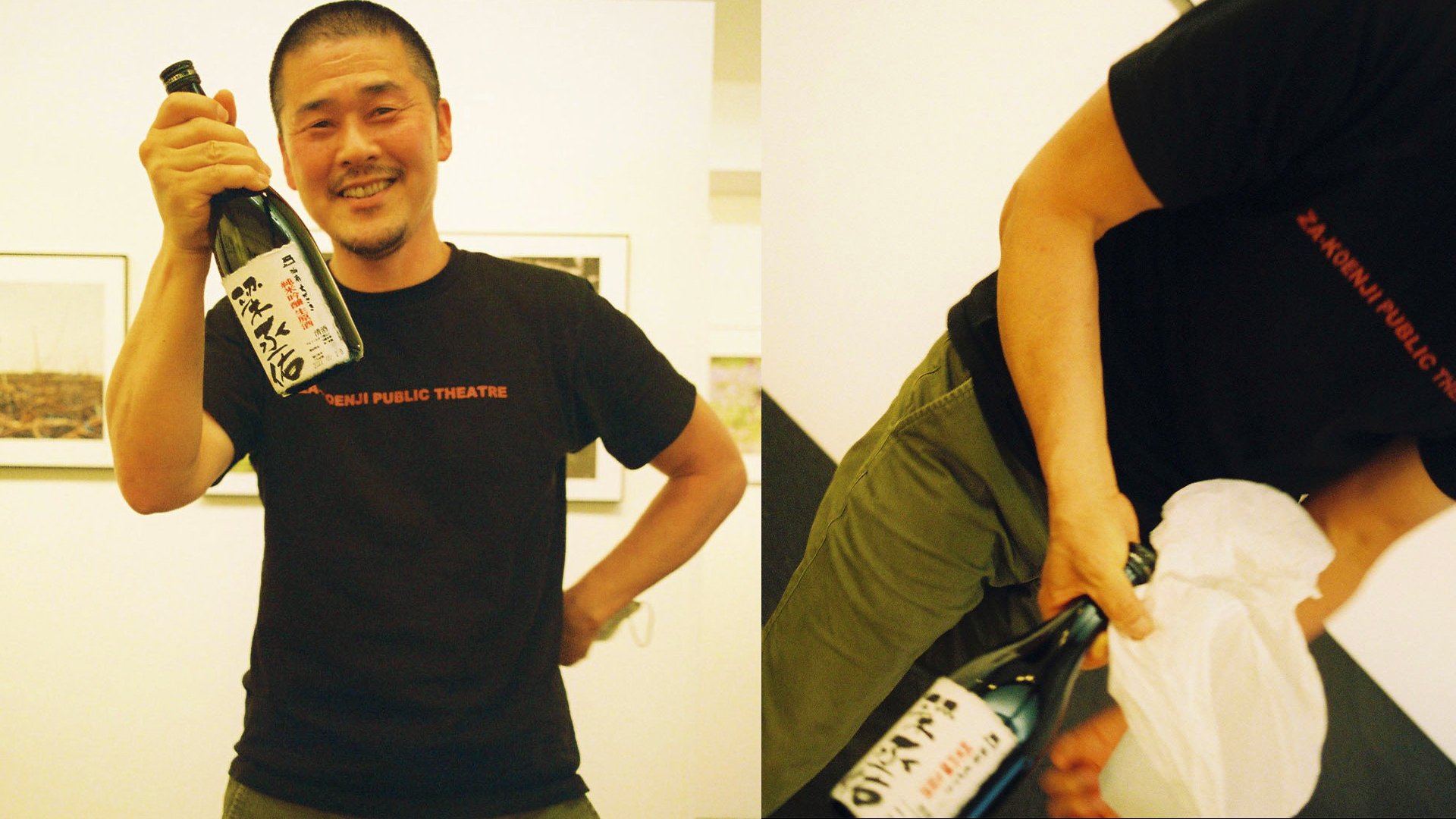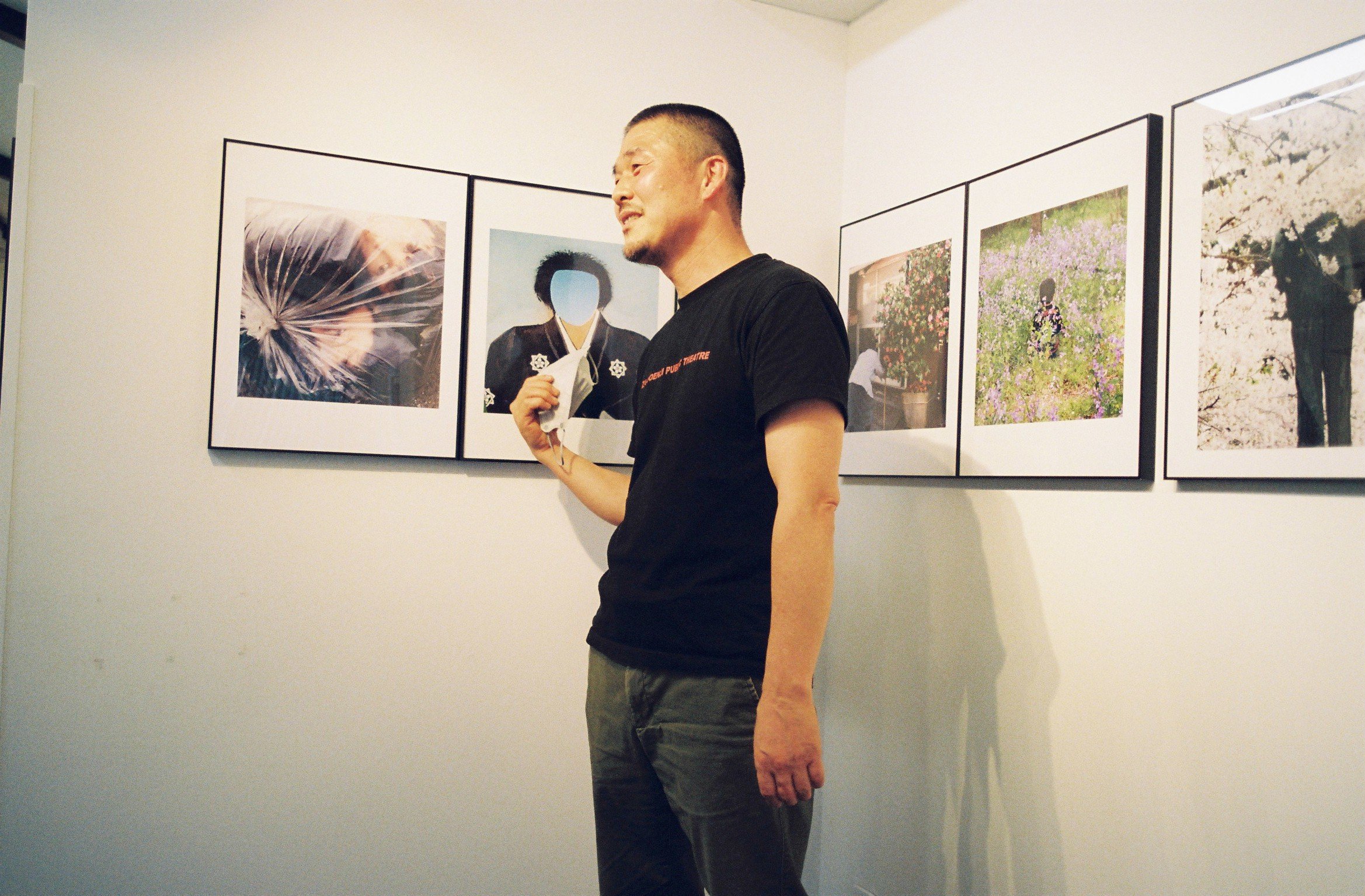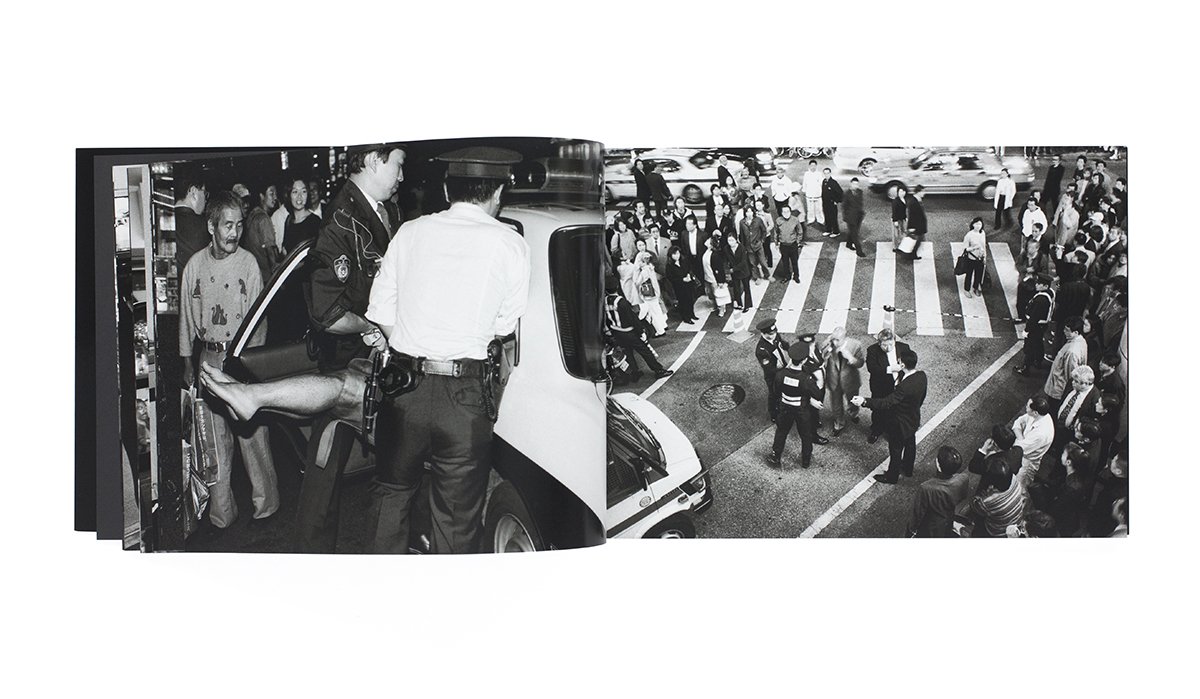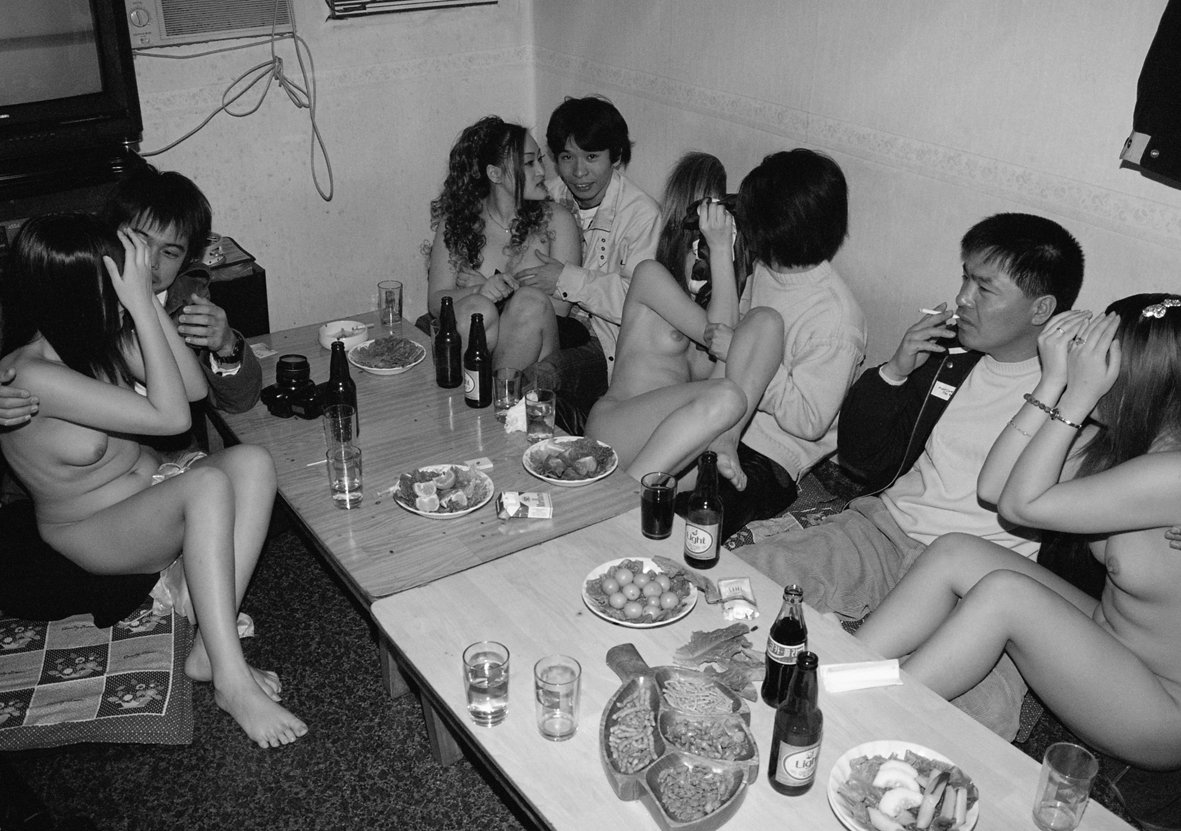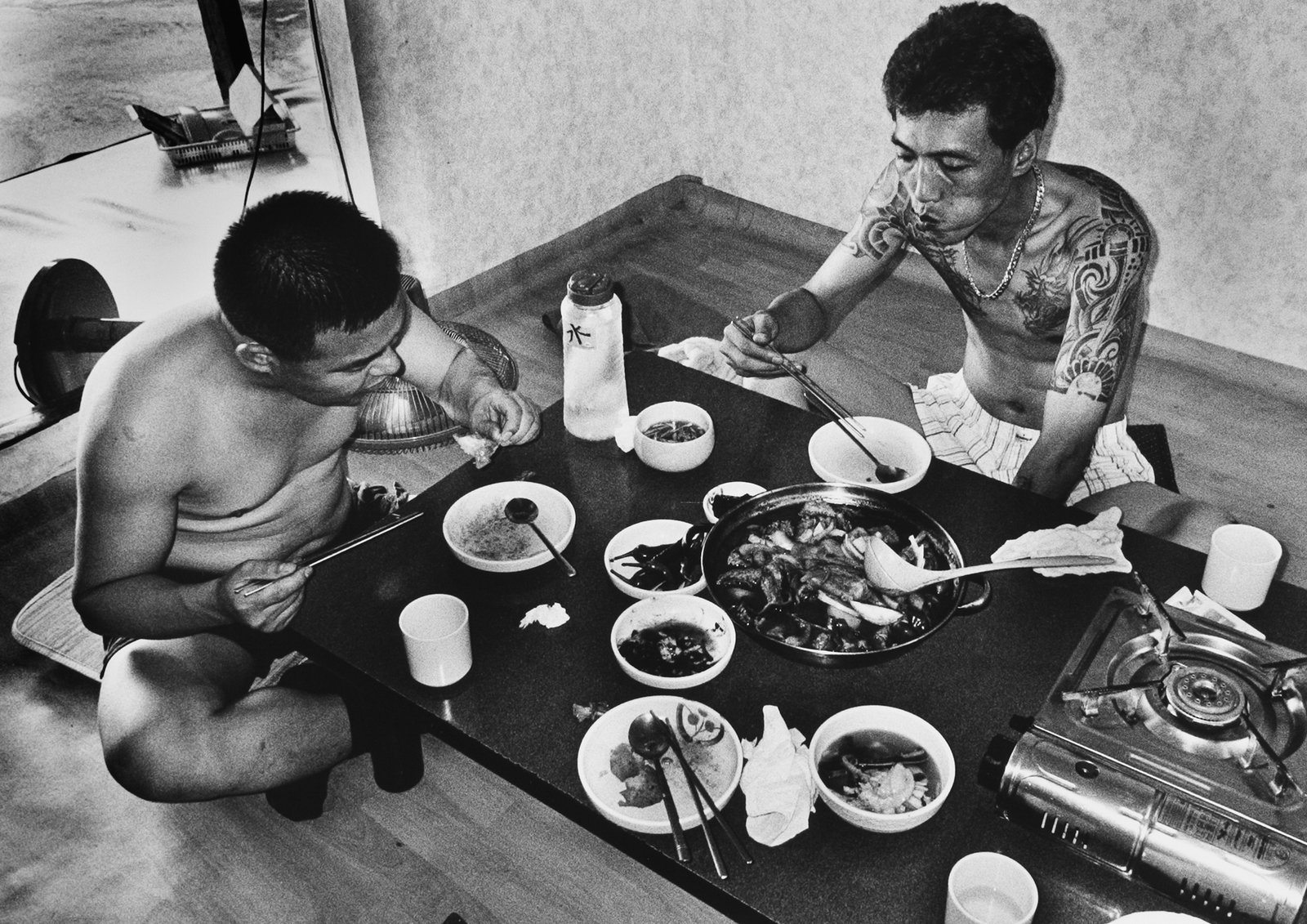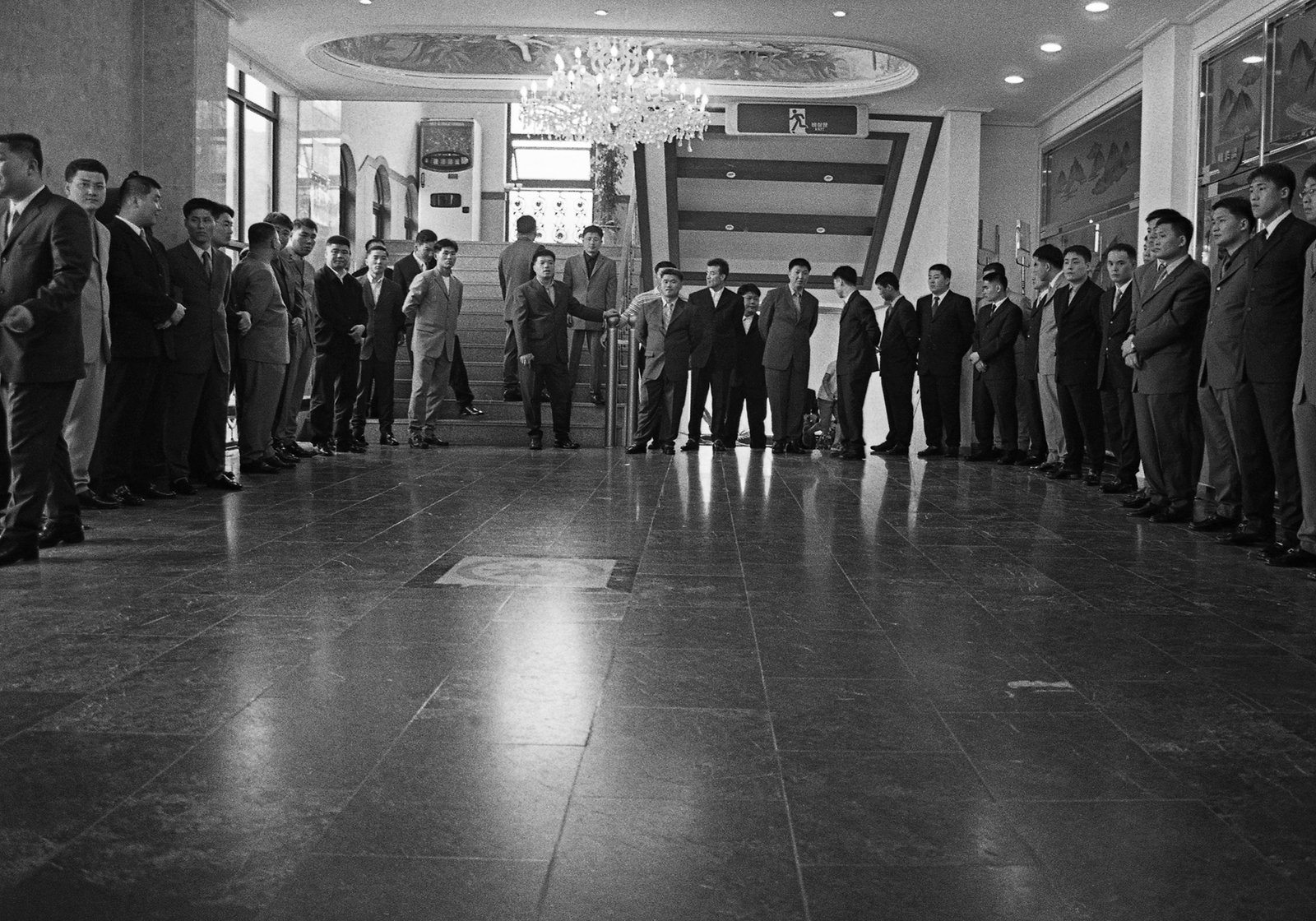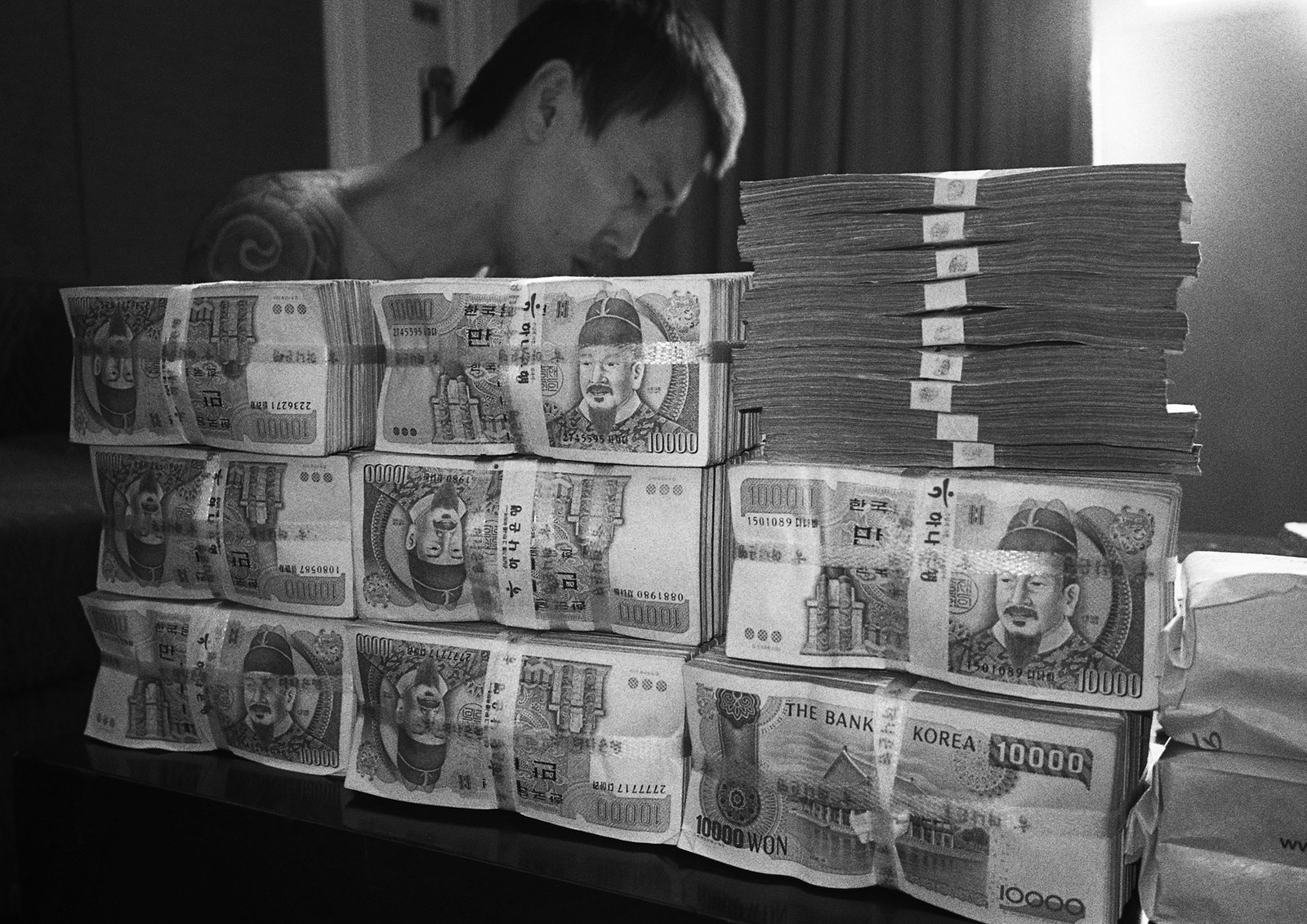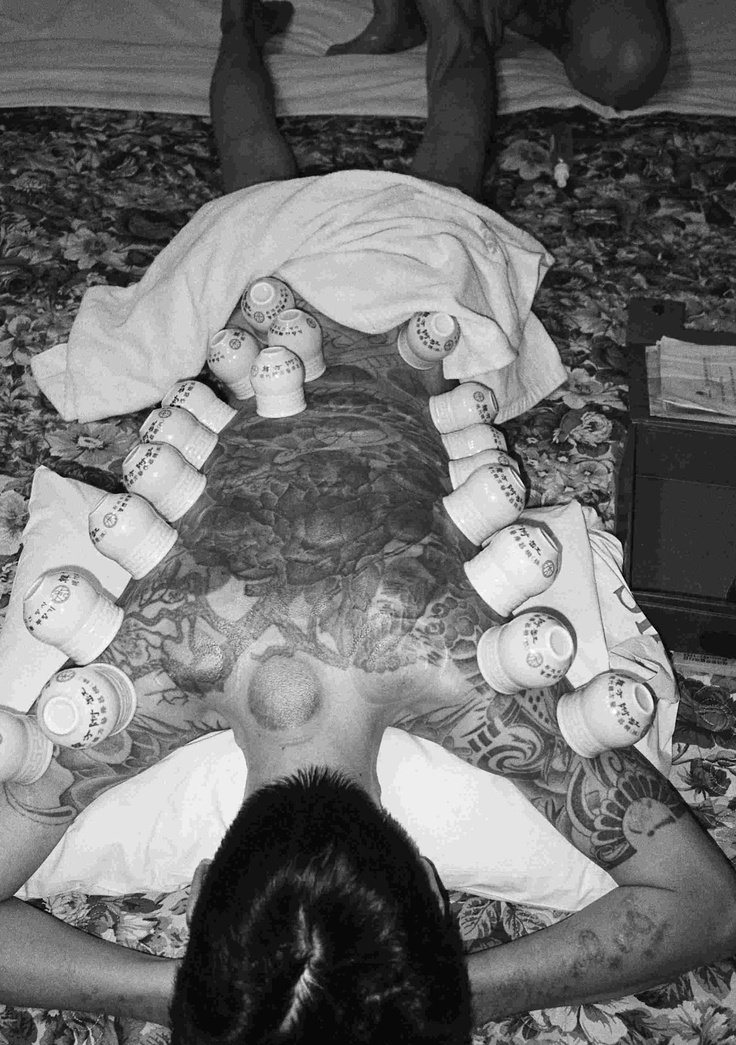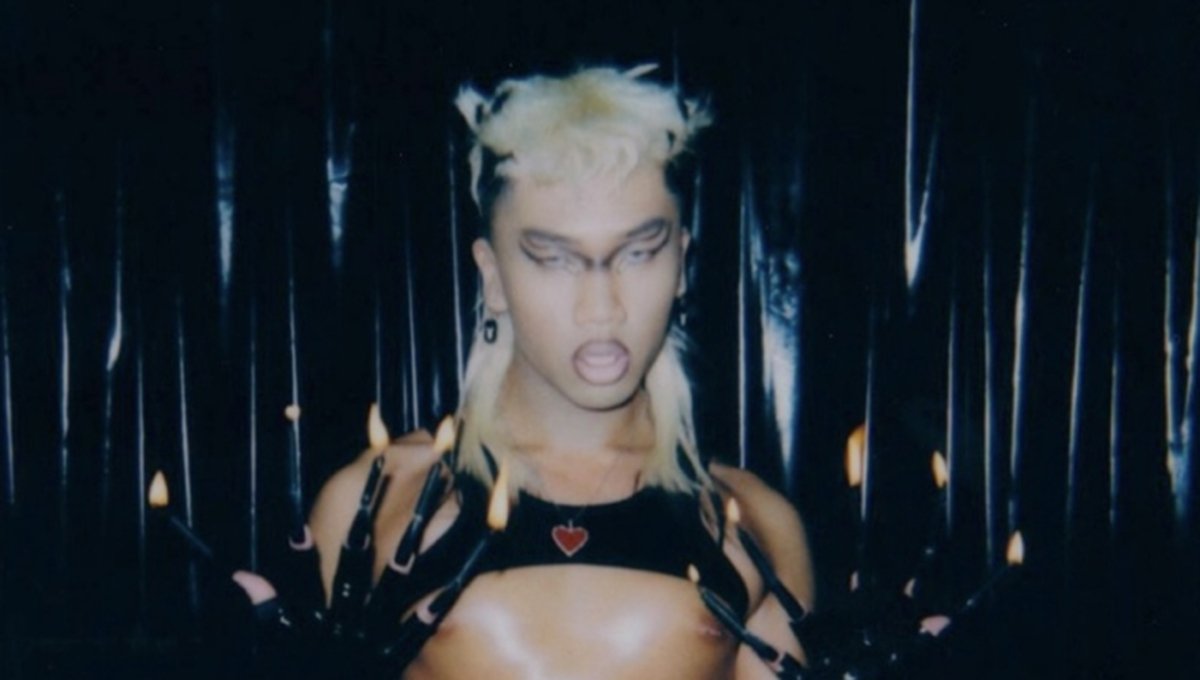UNDER KABUKICHO NEON LIGHTS - A sit down with Seung-Woo Yang
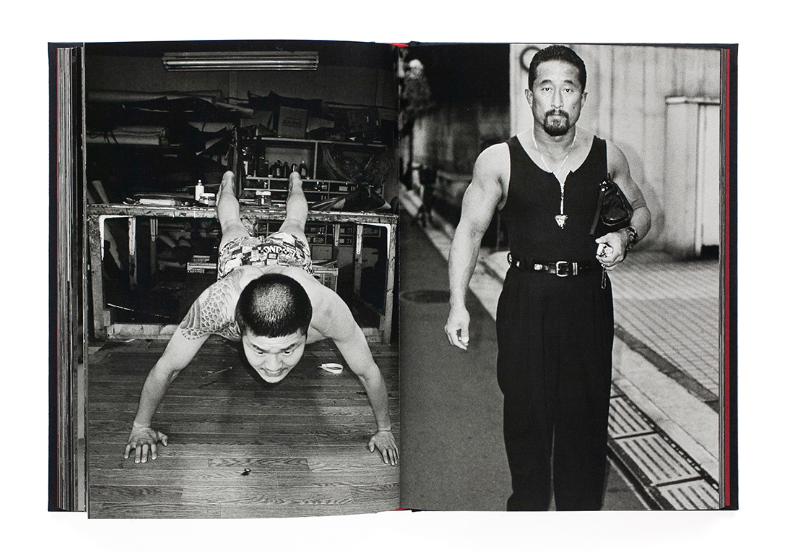
Pretty things and beautiful people never appealed to Seungwoo Yang.
A photographer originally from Jeongeup, Korea who has been capturing the Tokyo Yakuza and underground scene for over twenty-five years now, he would instead always point the camera toward the untouchables, the people who are often misunderstood and hence mistreated, shining light on topics that usually stay untouched.
For a guy who has experienced sleeping in a cardboard box beneath Kabukicho neon lights, he has quite a trajectory under his belt. After graduating from Tokyo Polytechnic University in photography and going on to graduate research in Media Arts, Seungwoo has published a total of seven books, holding various exhibitions in Tokyo, South Korea, and Paris.
Some of his works include, ‘The best days’, a book dedicated to the good times he’s had alongside his childhood friends who remain to be a part of the Korean Yakuza, ‘Shinjuku Lost Child’ a compilation of images portraying the everyday shenanigans that go on in the streets of Shinjuku, ‘The Last Cabaret’ exposing the dirty secrets hidden inside the most exclusive host clubs and his most recent exhibition ‘B side’ an assortment of rather ‘subtle’ images that show another face to society; because to him upside down is right side up and right side up is upside down.
How he got his footing in the world of photography is rather unusual and starts from the day he and his friends decided to take a road trip to the outskirts of Korea. Traveling for over three hours, they managed to get to the other side of the country, landing in Busan Port. Realizing how limited his opportunities were in his hometown, Seungwoo decided to get a one-way ticket to Tokyo, anticipating the adventures to come. Upon arrival, he came to know of a little street named Kabuchiko and he and his friend became hooked; bustling streets turned into a dark adult playground at night with new surprises to come every day.
To keep his visa however he needed to enroll in education. Within the limited choices he had - with the only other option being cooking - he decided to take courses at a photography school. Not knowing what to expect, Seungwoo eventually started taking photos of anything that intrigued him, from the brawls that broke out on the street to the policemen that tried their best to maintain order. Because with photography, he could tell not only his own story but the truthful tale of others that never made it out into the daylight.
The phrase images speak louder than words is an understatement for his case; emotions of fear, joy, pleasure, and pain are palpable, the aroma of the people and places captured, faint but present. That’s because Seungwoo not only photographs the underworld but he belongs there; his muses not merely just people on the street but close friends that he holds strong relationships with built through mutual respect and patience.
With a rare opportunity to visit his exhibition and interview the man himself, we welcome you into a chat exposing Seungwoo's early career, his opinions on past and present Shinjuku life as well as some advice for upcoming young creatives.
HI SEUNGWOO, THANK YOU FOR TAKING THE TIME TO TALK TO US TODAY. YOU CAME TO TOKYO IN 1996 AND HAVE BEEN HERE EVER SINCE. WHAT WERE YOUR FIRST IMPRESSIONS OF THIS COUNTRY?
When I first came to Japan, my first thoughts were that the streets were impeccable and the people were nice but because it's so neat and orderly here, I felt like I had to abide by the rules as well and that was really stressful for me [laughs]. So when my language teacher told me and my friends to stay clear of Kabukicho because it was dangerous, what did we do? We did the complete opposite and decided to go there right after classes were over. IT WAS HEAVEN. People lying around everywhere and the streets were dirty and for the first time in Tokyo, I felt like I belonged because it was similar to the neighborhood in Korea where I grew up in.
Seung Woo Yang at his exhibition ‘B-side’ at Fugensha gallery
WHAT GOT YOU INTO PHOTOGRAPHY?
After two years, you need to improve your Japanese language skills and score good grades on tests in order to stay in the country so that’s when I decided to study photography. I actually couldn’t care less about the subject, I just picked that school because it was located in Shibuya and I could be closer to the action [laughs]. But when I actually started taking photos, for the first time in my life I had this urge to learn. What made me really like the subject was the people I was capturing in my images. Those people on the streets that I tend to take really bust their asses off just to make a living you know? At the time, Shinjuku was full of people really hustling and bustling. An anecdote I like to use is about the stars that you never get to see in this city because of the smog and all of the lights. But somehow, within all of the noise that surrounded me, I managed to find my ‘star’, my one passion, and that was just coincidentally photography.
B-side exhibition
A cassette tape has an A-side [front] and B-side [back]. Some may not even know what these are anymore. It’s too lengthy to explain here so for additional context, I suggest looking it up. This exhibition is my ‘B-side’. That’s because the people and places from the underground scene belong on my ‘A side’. For those reasons I’m recognized as an underground photographer. But surprisingly the photos exhibited at this gallery were taken effortlessly I didn’t have to try, I shot what I wanted to shoot. Sure the people who like my ‘A-side’ photos I take of the ‘B-side’ world might complain saying they're boring, disappointing, or not my style.
But oh well, I like it anyway,
WHAT WAS YOUR FIRST JOB AFTER GRADUATING FROM SCHOOL?
When you’re young you have this unexplainable confidence under your belt, this gut feeling that you will somehow succeed. For me, after graduation straight out the gate, it was a struggle. And I started to think why was this happening to me? I never asked for this [laughs]! So I was just hopping from one part-time job to the next. But my visa status also changed during this time.
It changed to an ‘art’ visa, sounds cool right? But actually, you can’t even work at a combini if you have this visa status so I had to do illegal work aka ‘black baito = shady businesses’. Sadly, because of the long hours and strict bosses, I couldn’t even take photos during my private time! So I decided to look for part-time jobs where I can earn money and take photos regularly.
This is where I found a job working in an oil field but also in parts of Africa like Congo, Tunisia, Malaysia, Indonesia, Brunei everywhere I could go to get money. This was 10 years ago though. For short projects, I only stayed for about 5 weeks in those countries and the longest was for 2 months but it was good enough.
TAKING YOU BACK TO THE TIMES YOU HUNG AROUND IN KABUKICHO, WHAT DO YOU THINK ABOUT THE CURRENT SCENE? HOW HAS IT CHANGED DO YOU THINK COMPARED TO THE PAST?
In the past, there were so many people I wanted to take photos of on the streets of Kabukicho but now there is absolutely no one. I spend a night there and sometimes I can’t even manage to take a single shot. I thought it was maybe because I was getting old but now I actually think the people roaming those streets have changed. Most of them are just people willing to splurge some cash for a nice night out. People like to draw the line between black and white but why not leave Shinjuku in the grey zone? But no, people had to categorize it and clean it up. Sure for the pure, it is better but what about the impure ones, what happens to them? It should’ve been left as a city that is behind the curtains, the backhand, and not the protagonist.
DO YOU HAVE ANY FOND MEMORIES FROM THOSE PAST SHINJUKU KABUKICHO DAYS?
There were so many different groups back then; homeless people, booksellers, prostitutes, people who busked [but sang very poorly], yakuza, self-harmers, and all of these people would gather for one night every weekend on Friday or Saturday, talking with each other, sometimes at each other. And there was this one two-foot tall guy named Bobby from Okinawa who was the main leader of all these groups in charge of keeping us in our lanes. But one day they all just fled, and what happens when the adults leave? The children were the only ones left to fend for themselves.
WHO ARE YOU TAKING RIGHT NOW THEN?
I’m taking pictures inside of host clubs and ‘Tekiya’ [Traditional Japanese merchants who were predecessors to the modern yakuza] mostly. There’s no one on the streets I want to take anymore, so I take what happens behind closed doors now; a lot of people who have owned businesses in Shinjuku for over 30 years. The Tekiya project will actually end in September this year but it took so long for me to start this project in the first place. I asked for a part-time job at one of their festival booths ‘yatai’, but it was only a year into the job that I finally mustered up the courage to ask them if I could take a photo. But there's a reason for this. My job was to make the Okonomiyaki and Yakisobas but I wouldn’t allow myself to take pictures unless that shop became the number one Okonomiyaki and Yakisoba seller on the block because who wants a guy who can’t do his job properly and only takes photos? I knew I owed them that.
SPEAKING ABOUT HOST CLUBS, HOW DID YOU MANAGE TO SHOOT INSIDE? WAS IT HARD TO GET PERMISSION FROM THE OWNERS?
By now everyone knows me as that ‘Shinjuku photographer’ so I think people are somewhat already aware of me. Also, I got a referral from the big boss Yoshida-san who is the king of Kabukicho host clubs. One yes from him and that’s all you need to get in there.
Do you want to hear a good story?
YES.
I’ll tell you why I never take photos discreetly and always ask permission before pointing the camera at them. Where I grew up, everyone knew everyone, and word got around very quickly. One day, my mother asked me to take a taxi to get back home because she wouldn’t be able to pick me up from school. So there I was, a kid with a little cash in my hand ready to get in but I had a gut feeling that something bad was about to happen. Halfway through the journey, the driver gets into an accident, his head is covered in blood and I’m panicking but I’m just a kid you know? I see this coin laying next to him maybe equivalent to 50 yen now. I told myself I could either stay in this cab or run away with the 50 yen in my pocket. I chose the latter and ended up running to the next village leaving the poor man to bleed. With that money, I bought a pack of chewing gum. But when I came back to my hometown word had already gotten around that a kid in a taxi had run away and left the driver in the damaged vehicle. By then, the gum I was chewing had become hard like a rock and only the soreness of my mouth was left. That’s when I decided I would never steal from anyone again and that applies to taking photos of people without permission. Because when I do, it takes me back to this exact memory and I’m left bitter. So now I always ask upfront ‘do you mind if I take a photo?’
AS A PROFOUND PHOTOGRAPHER WHO HAS WON MANY ACCOLADES DO YOU HAVE ANY ADVICE FOR YOUNG PEOPLE?
Do you want the sweet version or the salty one?
SALTY, PLEASE.
Young people in their 20s and 30s occasionally come up to me with their photography work, saying they’re struggling and it's usually about heartbreak. Falling leaves to represent breaking up with their boyfriend and the aftermath of it etc.. but that’s a bit flimsy no? I mean I get it, heartbreak was painful during my 20s but there's so much more to life than that. Let me tell you my wine story for further advice. Usually, you only need 10 photos to showcase at a group exhibition.
Anyone can take that many photos even if someone asked you to take pictures of wine; wine in the glass, wine on the lips, wine getting poured. But for an individual show, you need at least 30 so it's a bit harder. Now rather than just the wine, you need to go to the vineyard and understand the differences between red and white. To publish a book you need at least 100 photos so the hurdle gets even higher.
Now you not only need to know the difference between red and white, but you also need to know what sorts of dishes go with which wine, the aftermath of someone getting too drunk on that wine, etc..[laughs]. To top it off you need to have enough imagination to create a storyline for the photos. Imagine a guy who tries to ask a girl out at dinner with wine. He’s carrying flowers for him to give to her but he gets rejected. All shit breaks loose, the wine glass falls to the floor, stains the carpet and the flowers he’s holding in his arms shatter into pieces. I’m quite strange so I don’t really like to dwell on people’s happiness. I rather like that moment when people sigh in disappointment so the story ends there but you see, you have to use your imagination.
SO IMAGINATION IS THE KEY TO SUCCESS?
Yes be imaginative, don’t be too serious all of the time.
WE’LL DEFINITELY KEEP THAT IN MIND.THANK YOU FOR YOUR TIME!
All photos of Seung Woo Yang by ifucktokyo
All other photography by Seung Woo Yang
About the author:
OL [Office Lady] in the day, sabukaru member by night, Ayana is a Japanese writer tackling controversial and oftentimes misunderstood social topics in the realms of modern-day Nippon.

